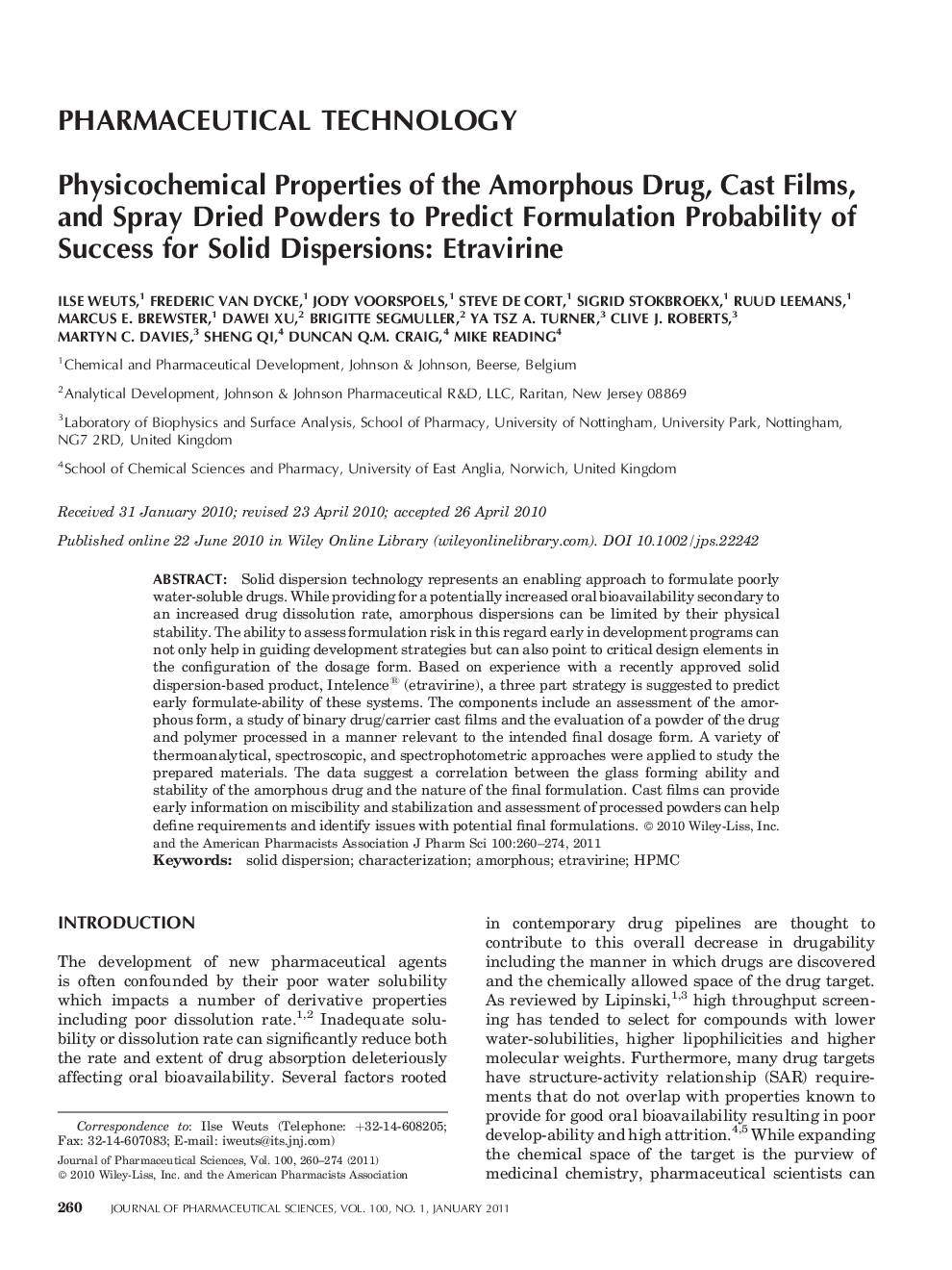| Article ID | Journal | Published Year | Pages | File Type |
|---|---|---|---|---|
| 2486798 | Journal of Pharmaceutical Sciences | 2011 | 15 Pages |
ABSTRACTSolid dispersion technology represents an enabling approach to formulate poorly water-soluble drugs. While providing for a potentially increased oral bioavailability secondary to an increased drug dissolution rate, amorphous dispersions can be limited by their physical stability. The ability to assess formulation risk in this regard early in development programs can not only help in guiding development strategies but can also point to critical design elements in the configuration of the dosage form. Based on experience with a recently approved solid dispersion-based product, Intelence® (etravirine), a three part strategy is suggested to predict early formulate-ability of these systems. The components include an assessment of the amorphous form, a study of binary drug/carrier cast films and the evaluation of a powder of the drug and polymer processed in a manner relevant to the intended final dosage form. A variety of thermoanalytical, spectroscopic, and spectrophotometric approaches were applied to study the prepared materials. The data suggest a correlation between the glass forming ability and stability of the amorphous drug and the nature of the final formulation. Cast films can provide early information on miscibility and stabilization and assessment of processed powders can help define requirements and identify issues with potential final formulations.
